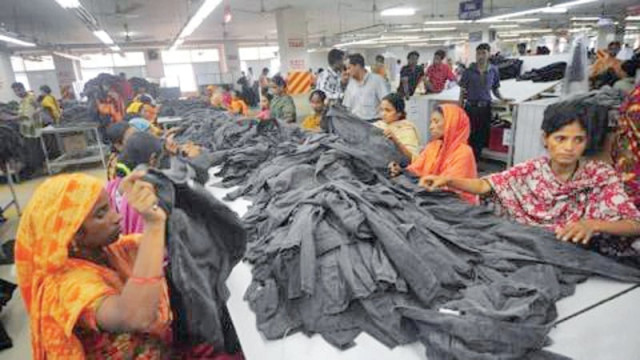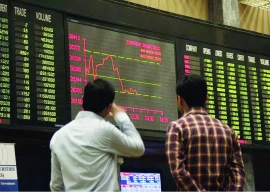
In 1986, the Bangladeshi government introduced landmark regulations for its emerging garment export industry, called the back-to-back Letter of Credit (LC).
Under the rules, banks would pay the suppliers directly for raw material acquired by the factory. The buyer would tell the bank the specifics of the raw material — including the value, supplier’s name and the date when the material was needed.
The bank would ensure that as soon as the supplier delivered the raw materials and furnished proof of delivery, he got paid by the bank within a specified period. With this arrangement, the factory owners could raise funds up to 75% of the value of their orders. In short, a factory exporting $10 million every year could buy raw materials worth $7.5 million without spending its own money.
When the factory consumed these raw materials and shipped its orders, money the bank had already paid was deducted from factory’s export earnings. The balance was then transferred to the factory’s bank account — the only money the factory ever touched. Under these regulations, the factory owner had no access to capital but had an easy access to raw materials.
This is an important distinction. In Pakistan, factory owners can get preferential export credit for buying raw materials and meeting working capital requirements. But once they lay their hands on this easy money, it proves tragic. In the long run, they squander this money to enact their personal dreams of grandeur, and prematurely.
But, in Bangladesh, factory owners could only become rich by processing and shipping more orders. Ironically, in both countries, banks try to help the exporters but in radically different ways. In Bangladesh, banks lend indirectly by making thousands of relatively smaller payments to the suppliers of raw materials. There is no big, tempting tranche of working capital given to the factory.
These rules brought nothing short of a revolutionary change in the behavior of all players. The focus shifted to performing and fulfilling orders at hand. A playing field was set that systematically rewarded order performance and closed all access to cheaper credit. Everyone had to work hard to get paid with no danger of payment default; so long as one fulfilled the orders. Also, the only way for the factory owners to get rich was to increase their capacity and to export more orders.
However, the relationship between expansion and getting wealthier has remained muddled in Pakistan. Securing cheap credit and then defaulting on it has long been a risk-free road to riches.
Under these standards, the few large garment exporters in Pakistan must possess the integrity worthy of Jinnah. In Bangladesh, sensible regulations ensure that neither bankers nor the factory owners are tested for their integrity.
All garment factories start small. A large size makes no sense as in the beginning no buyer is ready to place large orders. But once they have gained customer confidence, larger orders follow.
In a Darwinian world, the size of a garment factory is an indication of how well it has operated and survived. Currently, out of the 5,500 garment factories in Bangladesh, 400 have an annual sales turnover that is greater than $50 million.
In Pakistan, starting a decade earlier than Bangladesh’s, there are less than a dozen factories of this size. In Bangladesh, a garment factory is 40 times more likely to cross the $50 million mark than a Pakistani factory. The Pakistan ones just do not live long enough to grow into large enterprises; they usually die a premature death.
These stark differences cannot be explained by some mystical quality of Bangladeshi entrepreneurship. Extremism, which is currently the single most important hindrance in our path to growth, did not seriously come into play until 2008. Bangladesh already had an unassailable lead by then.
That country is not naturally predisposed toward garment exports either. If anyone, it should have been Pakistan. Bangladesh does not produce any cotton. Instead, it imports yarn from India or Pakistan at a higher cost. Only recently, it has developed a small and nascent textile sector, mostly manned by Pakistani staff. On the other hand, Pakistan has been a major textile player for the last 50 years and has always produced its own fabric. Bangladesh imports it.
Always intrigued by Bangladesh’s success, during my frequent interactions with Bangladeshi owners of garment factories, my stock question to them has been to name the single most important factor that helped jump Bangladeshi garment exports from $100 million in 1986 to $23.5 billion in 2014. Their near identical response always acknowledges the regulations on back-to-back LCs as one of the most important reasons.
For long, our regulators have heeded to industry demands of more and cheaper credit. We can see through the textile packages that have been released, time after time right until the latest one in 2009-2014 Textile Policy. All these packages have common themes with little variations. They provide preferential interest rate, authorise duty-free import of machinery and raw materials, attempt to keep the income tax rate lower and offer subsidies on sales under various inventive names. And yet, our garment export sales have remained flat.
Clearly, the very few Pakistani success stories seem to be outliers in a playing field that encourages an entrepreneur to self-destruct and choke himself on cheap credit, while forgetting all about performing on his order or aim for expansion.
Making his access to credit even easier under ever newer policies is like lending to a casino guest already on a losing streak. Entrepreneurs are humans and shall always remain vulnerable to temptations. Good regulations can cause a world of change in their behavior and trigger a cascading effect that can lift an entire nation out of poverty. It certainly is not too late for Pakistan to learn from Bangladesh and enact similar regulations.
The writer is an entrepreneur who has worked in Bangladesh’s garment sector
Published in The Express Tribune, July 28th, 2014.
Like Business on Facebook, follow @TribuneBiz on Twitter to stay informed and join in the conversation.
















COMMENTS
Comments are moderated and generally will be posted if they are on-topic and not abusive.
For more information, please see our Comments FAQ